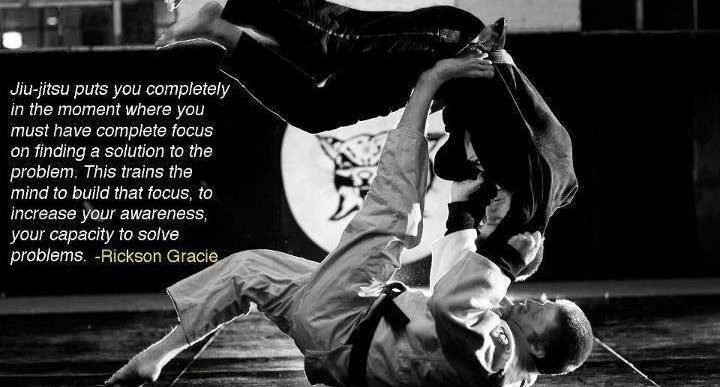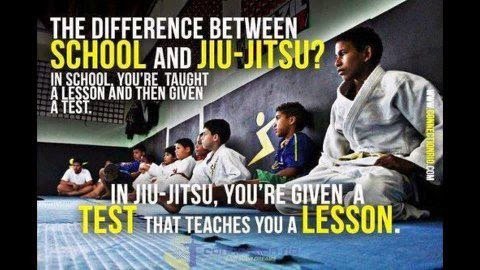By Greg Melita
Brazilian Jiu Jitsu has certain characteristics and abilities to offer its practitioners that other physical activities do not.
To put it simply,
BJJ enables you to control and determine the damage that is done to someone depending on the severity of the situation. Whether you are training at your Academy or find yourself in a situation where you have to defend yourself, the level of damage you decide to inflict on an attacker is completely up to you. As opposed to just a striking art where your only options would be to knock out or damage your opponent.
One might argue that you can control the damage done with any style you practice, and that might be true to some extent. But with BJJ there is a much broader scale and wider range of options.
Consider the following scenarios:
You are at a family party, and someone drinks too much to the point that they need to be removed from the house.
A friend or acquaintance has drug issues and gets out of control.
You are a bouncer and you want to remove a patron with as little damage as possible.
You’re out to dinner and a fight breaks out at the table next to you and threatens to overcome your table.
The above situations are ones where you want as minimal damage done to the person as possible. You have the option of taking them to the ground and immobilizing them to the point where neither you or the person you are controlling is a danger to anyone else.
If the situation is more serious where you or someone you love is in danger, you have the option of inflicting damage, strangling your attacker unconscious, breaking joints, or all of the above.
Strangling your attacker unconscious is something that will cause no physical damage to the person and they will be temporarily incapacitated.
You must have the proper training to be able to apply proper strangling techniques. Contrary to popular belief, the correct strangling technique does not stop the person from breathing. It cuts off the blood flow to the brain rendering them unconscious for an undetermined amount of time.
By doing so, you avoid physically damaging someone which in turn avoids any trouble with the authorities. There aren’t many striking styles that can enable you to leave your attacker unharmed. Chances are, if you are training in a Martial Art that only does striking techniques, any damage results in the person being hurt.
Further, while there are grappling styles out there that can teach you to throw/control/submit someone (Judo, Wrestling, Sambo, Catch-as-Catch-Can, etc.), the teaching approach and training methodology of controlling an opponent is different than in BJJ.
BJJ follows a specific methodology of teaching that is based upon realistic and live/full resistance scenarios. The hierarchy of positions and even the point system in modern BJJ competitions reflects the positional strategy that BJJ employs in a self-defense scenario. It is a result of tried and tested methods from years of challenge matches, streetfights, and prize-fights. Certain positions in grappling are superior than others and also enable you to strike the opponent with them not being able to strike back effectively.
This is how training in grappling without striking can be beneficial to prepare for when strikes do matter. As long as you train how obtain a superior position, it doesn’t matter if you get hit or not. The strikes will be ineffective due to your body’s relationship to your opponent.
The systematic strategy of closing the gap (rendering strikes ineffective), clinching, taking the opponent down, achieving a superior position, and submitting them, is the primary factor in Jiu Jitsu’s renowned success against all other martial arts styles.
That strategy alone in addition to emphasizing grappling techniques put Jiu Jitsu in the spotlight because it enabled BJJ fighters to easily beat their opponents in early NHB (No-Holds-Barred for you newbies) matches.
Let’s not forget that in ancient battle periods in Japan, Grappling techniques flourished. If you lost your weapon on the battlefield, you had to face your attackers wearing full armor, unarmed. Strikes were therefore rendered useless, favoring limb breaking and choking techniques.
Multiple Attackers
People who try to discount BJJ love to jump on this topic.
“Grappling is great for one-on-one combat, but what about multiple opponents in a street confrontation? You don’t want to be on the ground”.
My answer is always:
“Of course you don’t want to be on the ground. Most of the time, you are on the ground because it’s NOT your choice.”
If there are multiple attackers and there intention is to get you down, most likely they will succeed no matter what style you study.
There are actually positions like “Knee-on-belly” that enable you to control your opponent without actually being on the ground.
As far as people who train primarily in striking styles, being well versed in BJJ will actually help you to stay on your feet and utilize the stand-up arts that you know. And if you do wind up on the ground, guess what? You are well versed in how to escape and get back to your feet.
The more you train in BJJ, the more you will be able to actually stay on your feet long enough to apply that knowledge.
FULL CIRCLE
Nowadays, to be ready for different realistic scenarios and/or fight in MMA, you have to be versed in all ranges of combat. Striking, Clinching, Grappling, & Ground Fighting.
I have trained in other arts besides BJJ & Isshinryu Karate. These include Aikido, Jeet Kune Do, Wrestling, Muay Thai, Kali, Escrima, and Judo.
One thing that I see as a flaw in certain traditional martial arts is that they break down techniques so far that they lose the sense of reality. Most of the time they are standing still and everything is moving too slowly to be real. You then start to rely on movements of small muscle groups rather than large muscle groups.
This then causes the technique to fail against resistance and live opponents. You have to keep the big picture in mind and always account for resistance and stress. Things like finger holds, and small joint locks lose their effectiveness when it is a real live situation.
The filter to determine useful techniques in any martial art is an art that proves their techniques in a live resisting environment.
This will ensure best practices, teaching methods, and constant evolvement.
I’m a huge fan of MMA. I think that what the Gracie family did with the UFC woke up the martial arts world and changed it forever. That and Bruce Lee’s past contribution to the martial arts have shaped the future.
Grappling in itself is more effective than other styles when the opponent doesn’t know how to fight on the ground. It’s gotten to the point now where most martial artists train in all combat ranges.
However, you have to develop a decent level of proficiency in all ranges. You can’t expect success if you just slap a few techniques together from different arts and then say “I’m gonna fight in MMA”. You have to dedicate yourself in each style of study and apply it to truly be effective in MMA.
I see martial artists truly evolving into being “combat athletes”, where everything is taken into account (different styles, fitness, nutrition, injury prevention, strength and conditioning, etc). At the same time, individual styles will flourish for the people who enjoy the traditional arts, because they have different goals for their training.
Not everyone wants to be a UFC champion.

